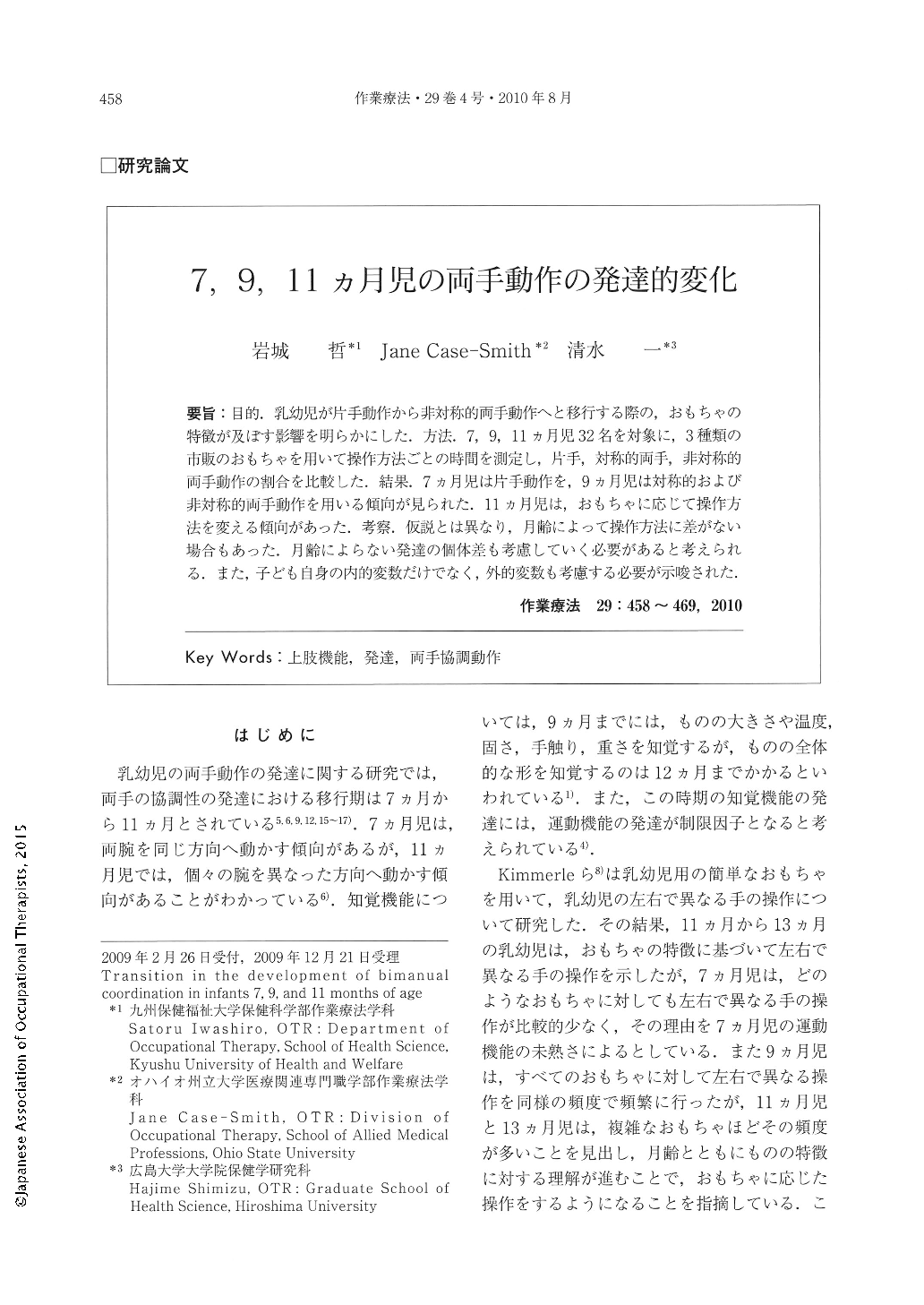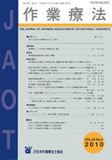Japanese
English
- 販売していません
- Abstract 文献概要
- 1ページ目 Look Inside
- 参考文献 Reference
要旨:目的.乳幼児が片手動作から非対称的両手動作へと移行する際の,おもちゃの特徴が及ぼす影響を明らかにした.方法.7,9,11ヵ月児32名を対象に,3種類の市販のおもちゃを用いて操作方法ごとの時間を測定し,片手,対称的両手,非対称的両手動作の割合を比較した.結果.7ヵ月児は片手動作を,9ヵ月児は対称的および非対称的両手動作を用いる傾向が見られた.11ヵ月児は,おもちゃに応じて操作方法を変える傾向があった.考察.仮説とは異なり,月齢によって操作方法に差がない場合もあった.月齢によらない発達の個体差も考慮していく必要があると考えられる.また,子ども自身の内的変数だけでなく,外的変数も考慮する必要が示唆された.
Objective. The purpose of this study was to investigate the effect of toy characteristics on infants' manipulation patterns and to analyze how the object's characteristics influence the transition from unilateral to asymmetric bimanual manipulation.
Method. Duration of manipulation patterns including unilateral, symmetric bimanual, and asymmetric bimanual manipulation demonstrated by 32 infants aged 7, 9, and 11 months old were measured. Three different infant toys available at stores with or without movable parts were used to elicit infants' performance. Percentages of durations of manipulation patterns were calculated, and then compared for each child's age in months, for each of the three toys, and then the interactions between age, toy, and pattern were analyzed.
Results. The trend appeared that the 7-month-olds spent more time on unilateral patterns and the 9-month-olds spent more time on symmetric and asymmetric bimanual patterns regardless of toy type. The trend also appeared that 11-month-olds differentiated their manipulation strategies according to the object's characteristics. Some of the percentages of manipulation patterns were significantly different by age, and by toy.
Discussion. Differing from the hypotheses, the infants demonstrated similar manipulation patterns on different toys. It seems necessary to consider the individual differences excluding age among infants. It is also suggested that we must consider not only the internal variances within the children, but also the external variances.

Copyright © 2010, Japanese Association of Occupational Therapists. All rights reserved.


